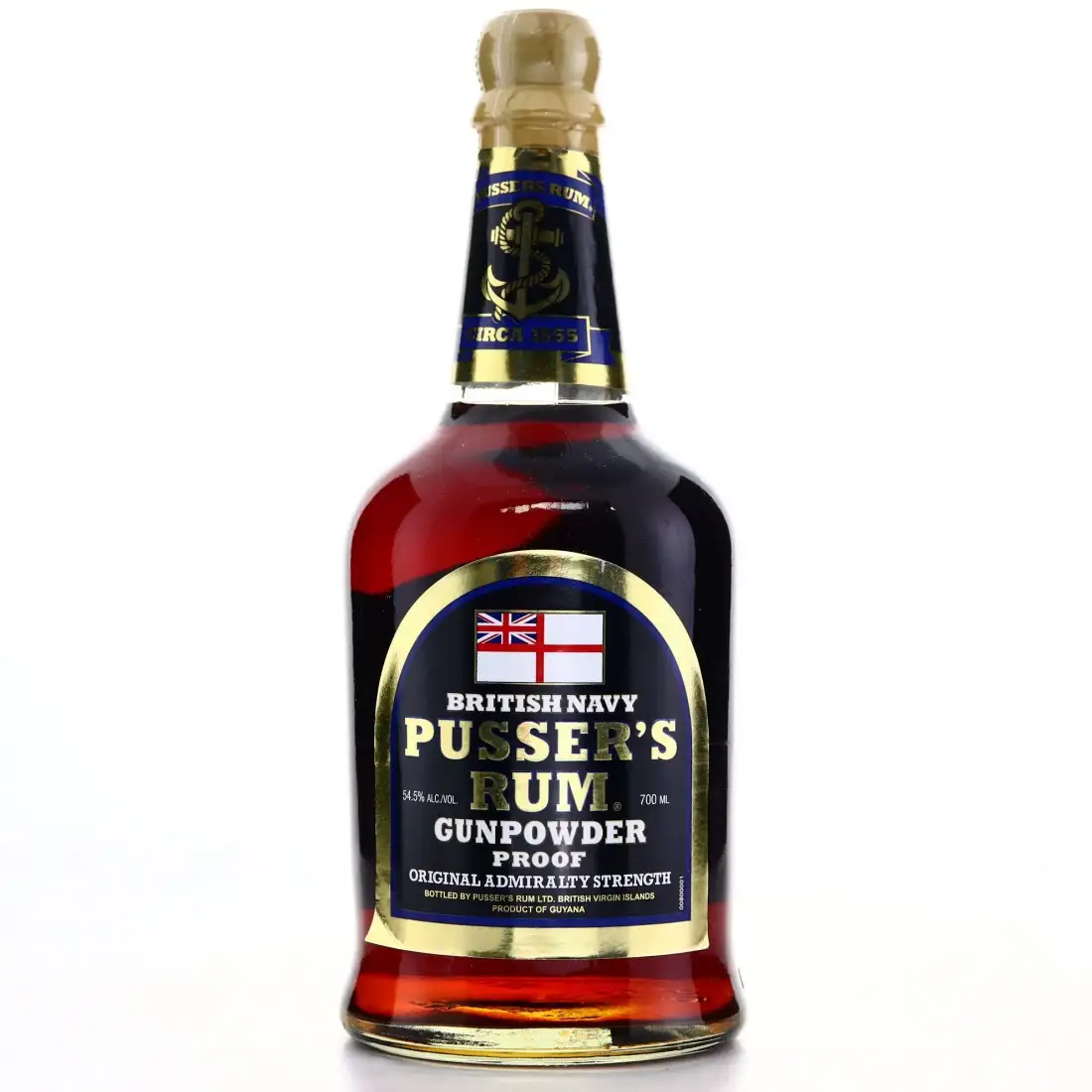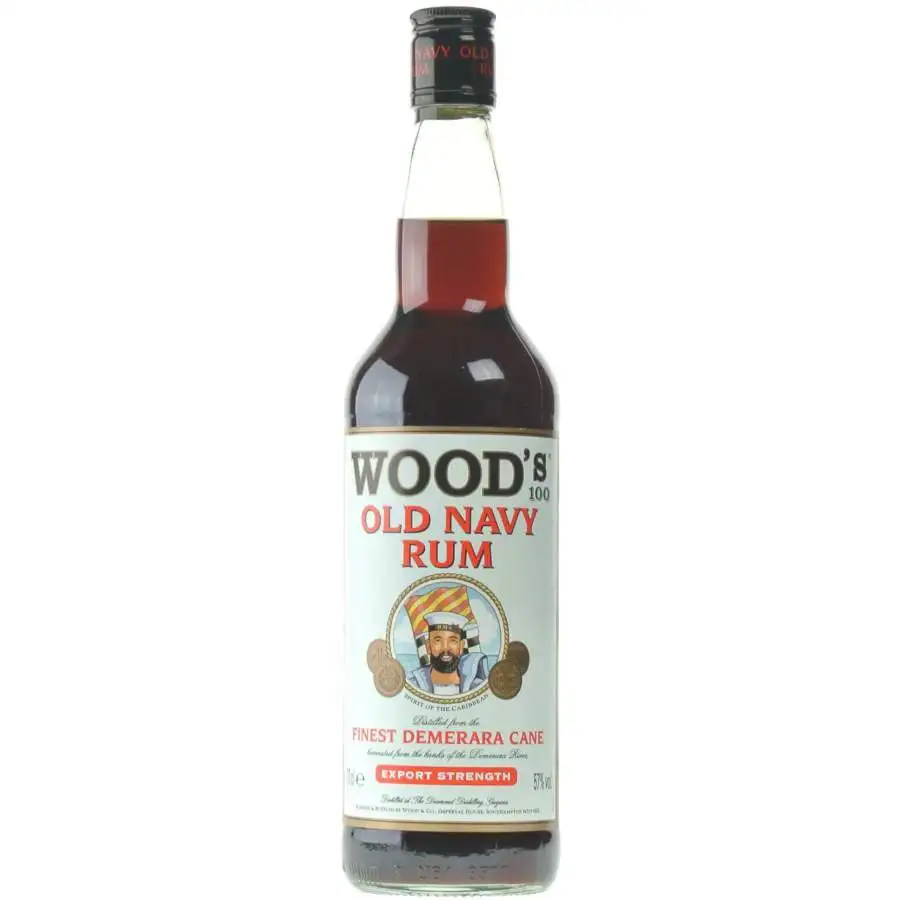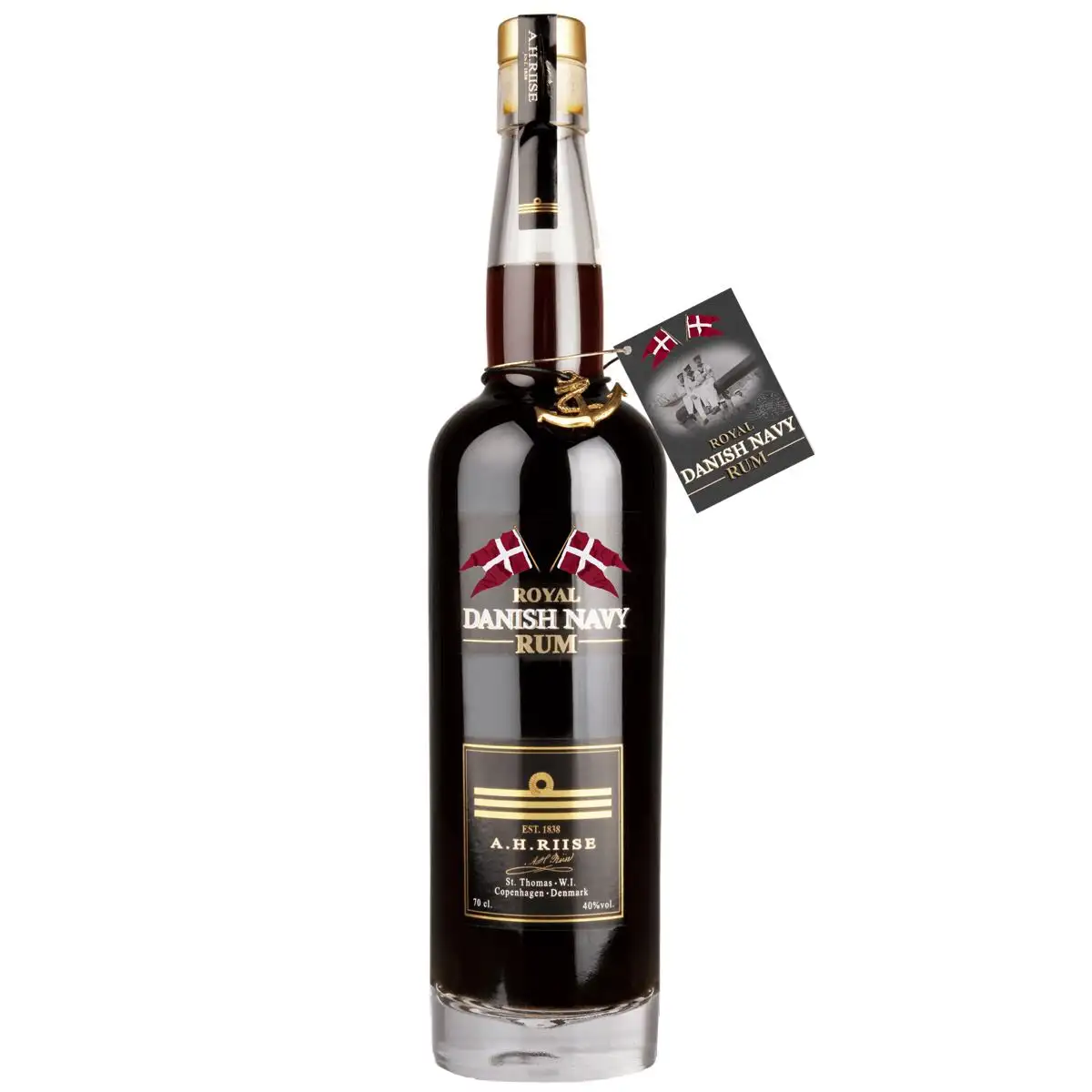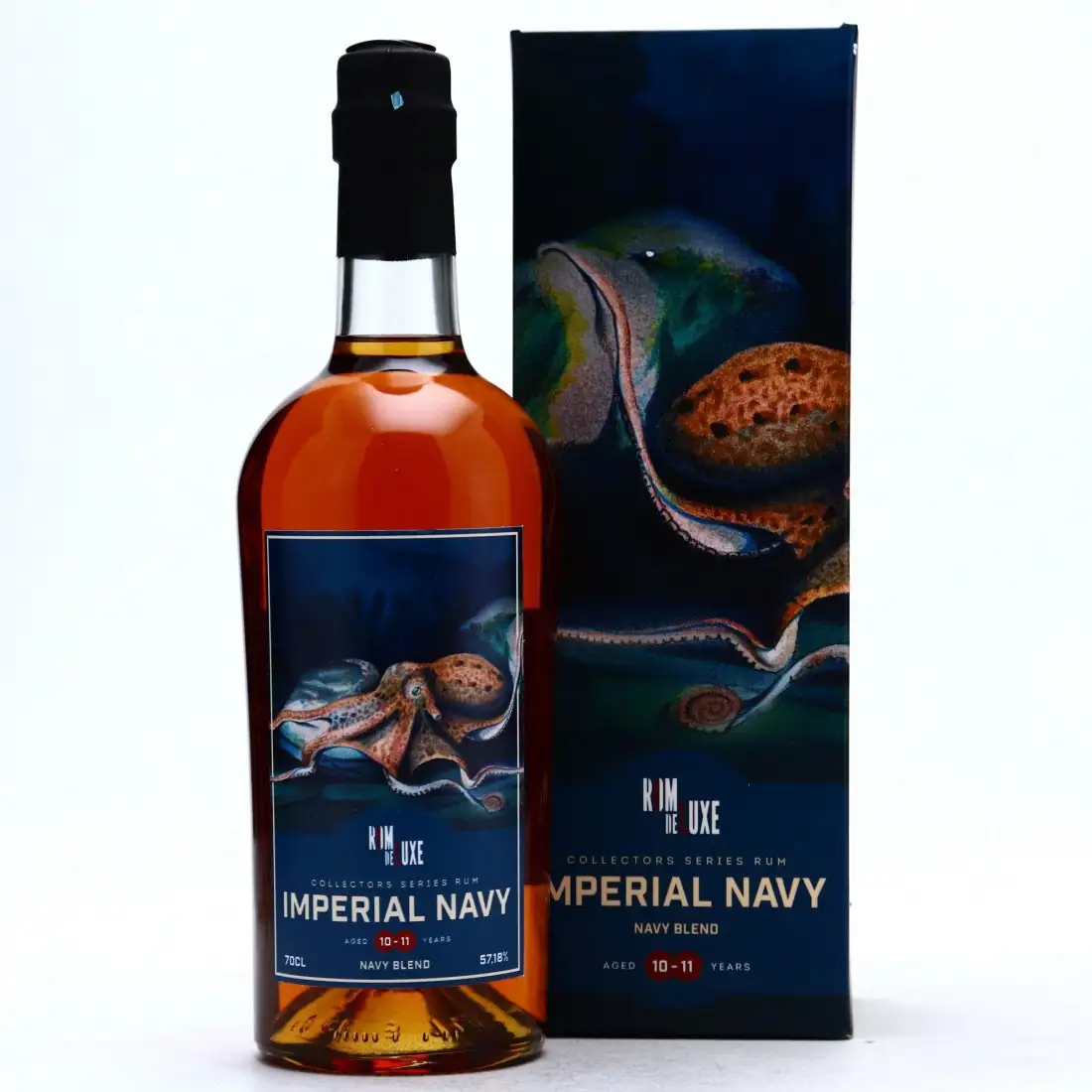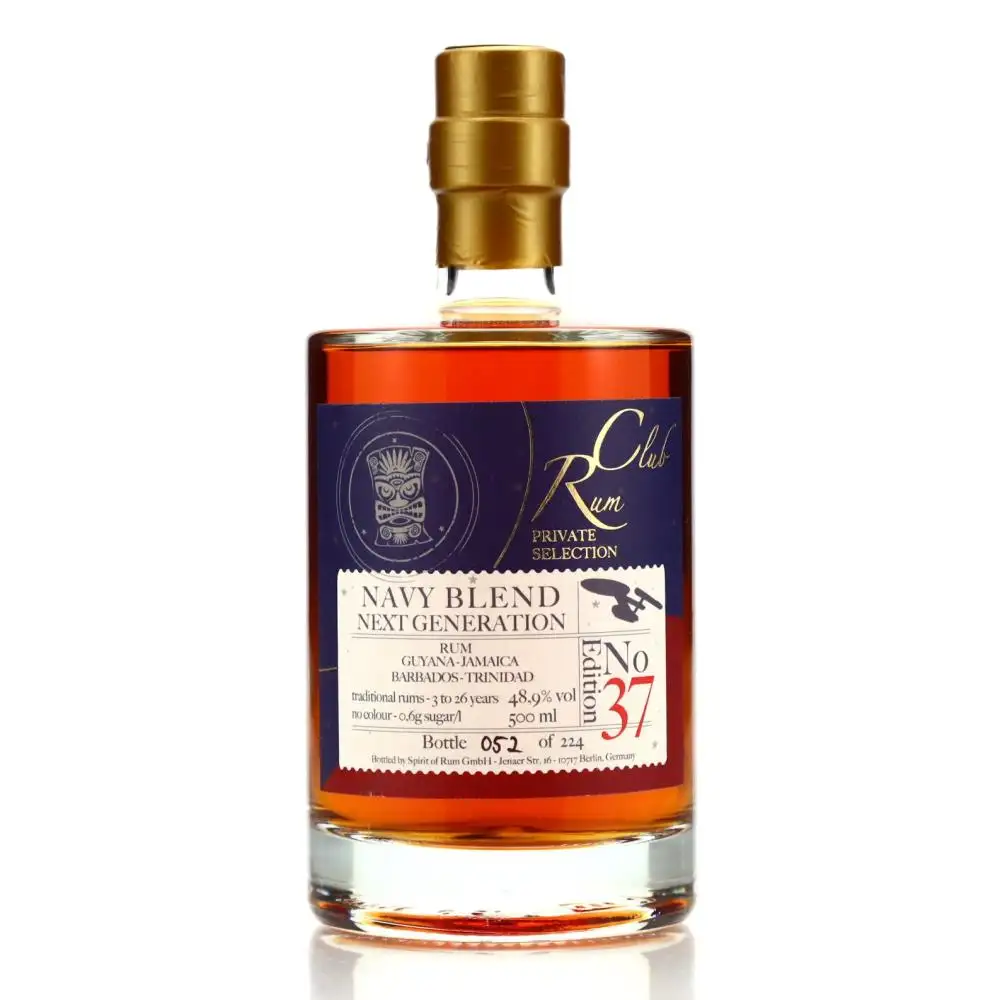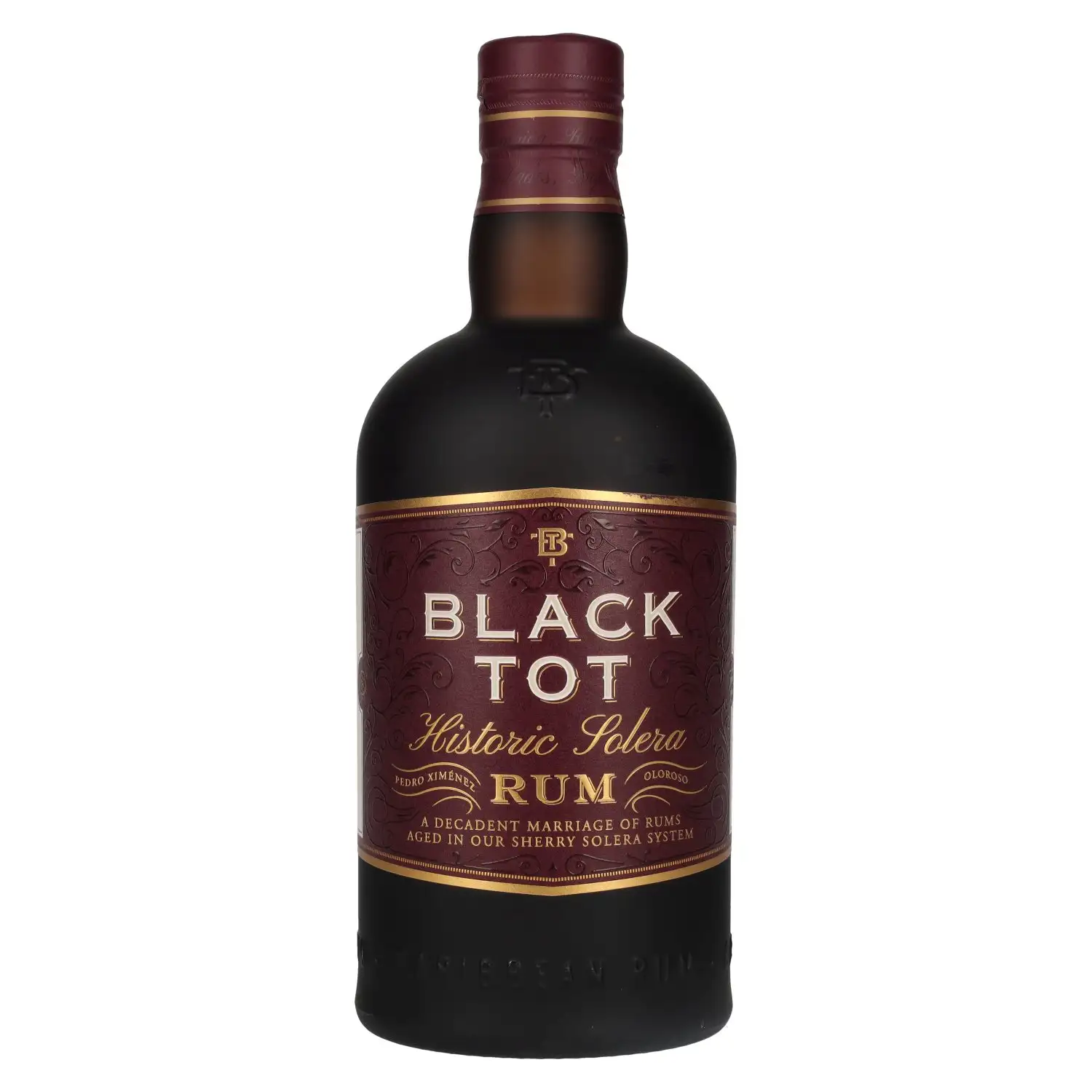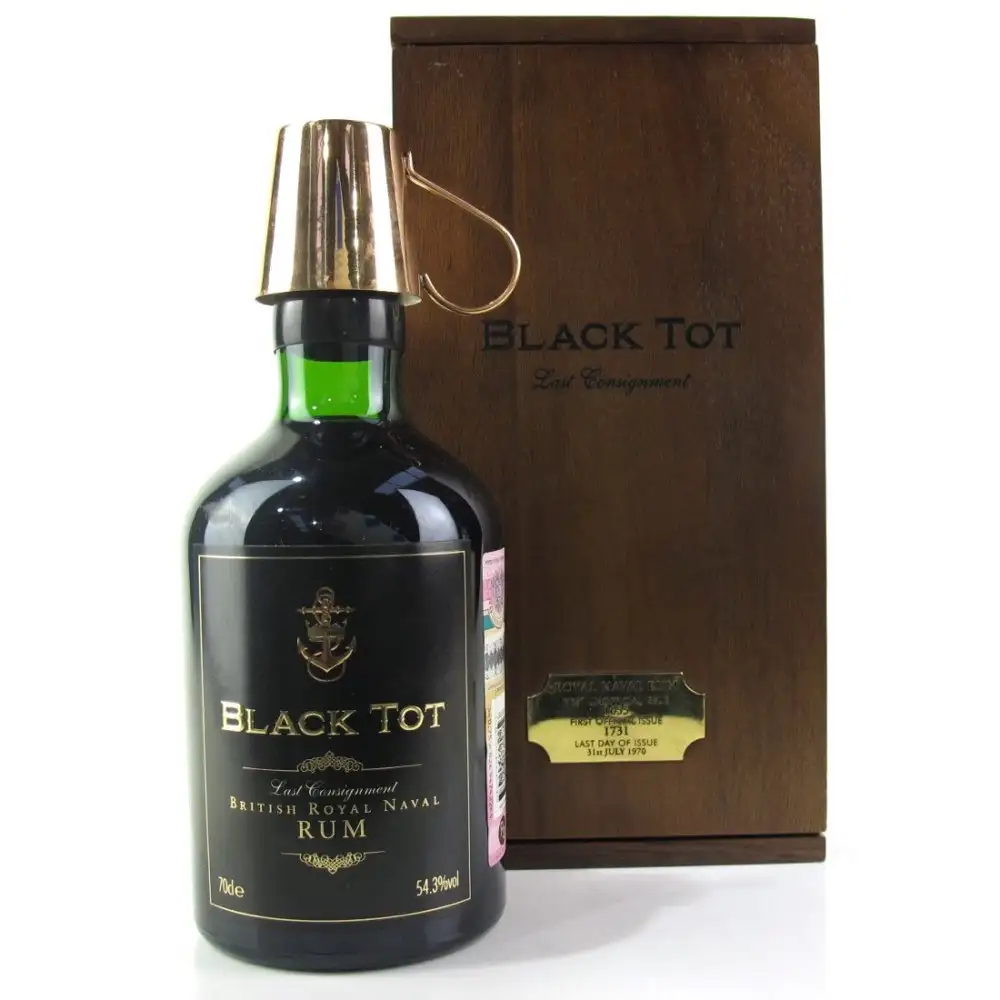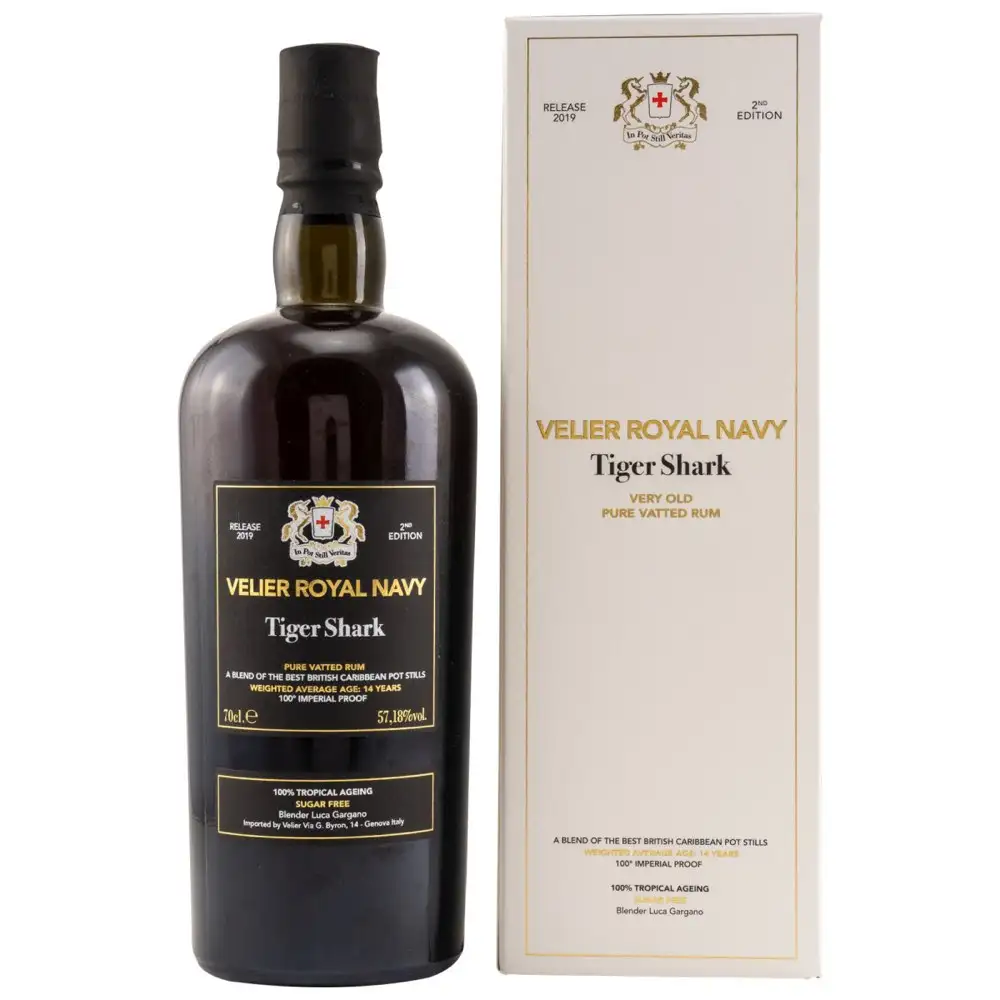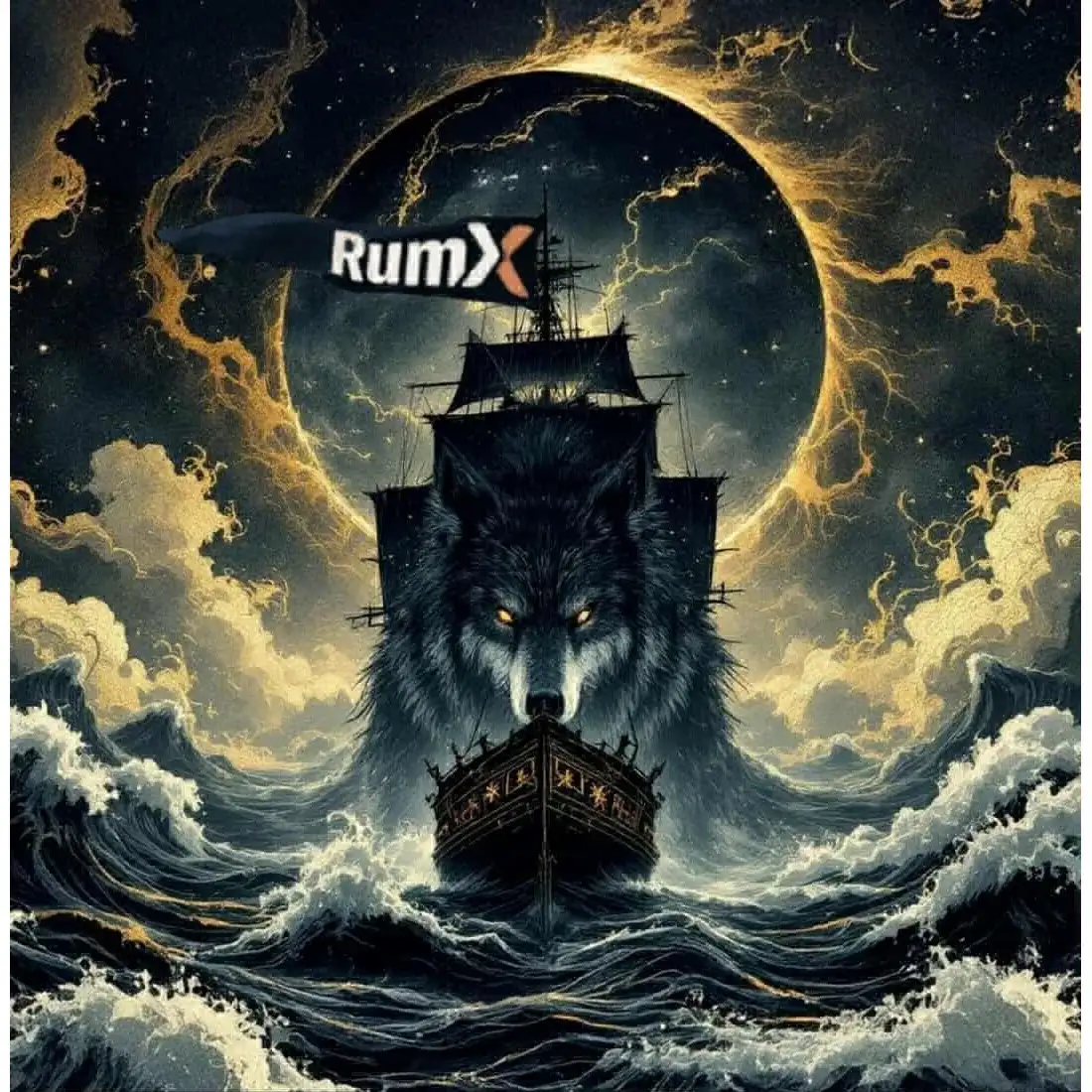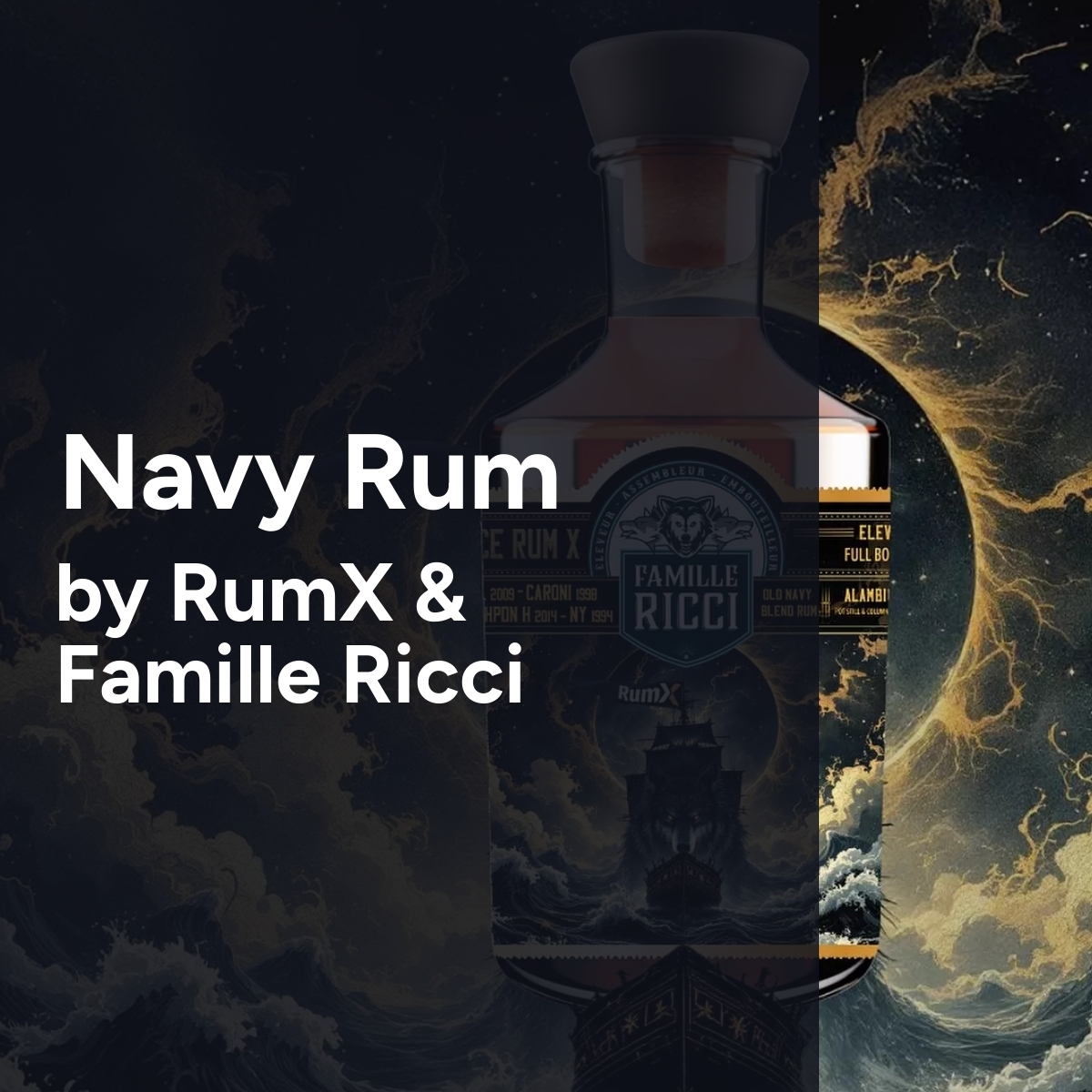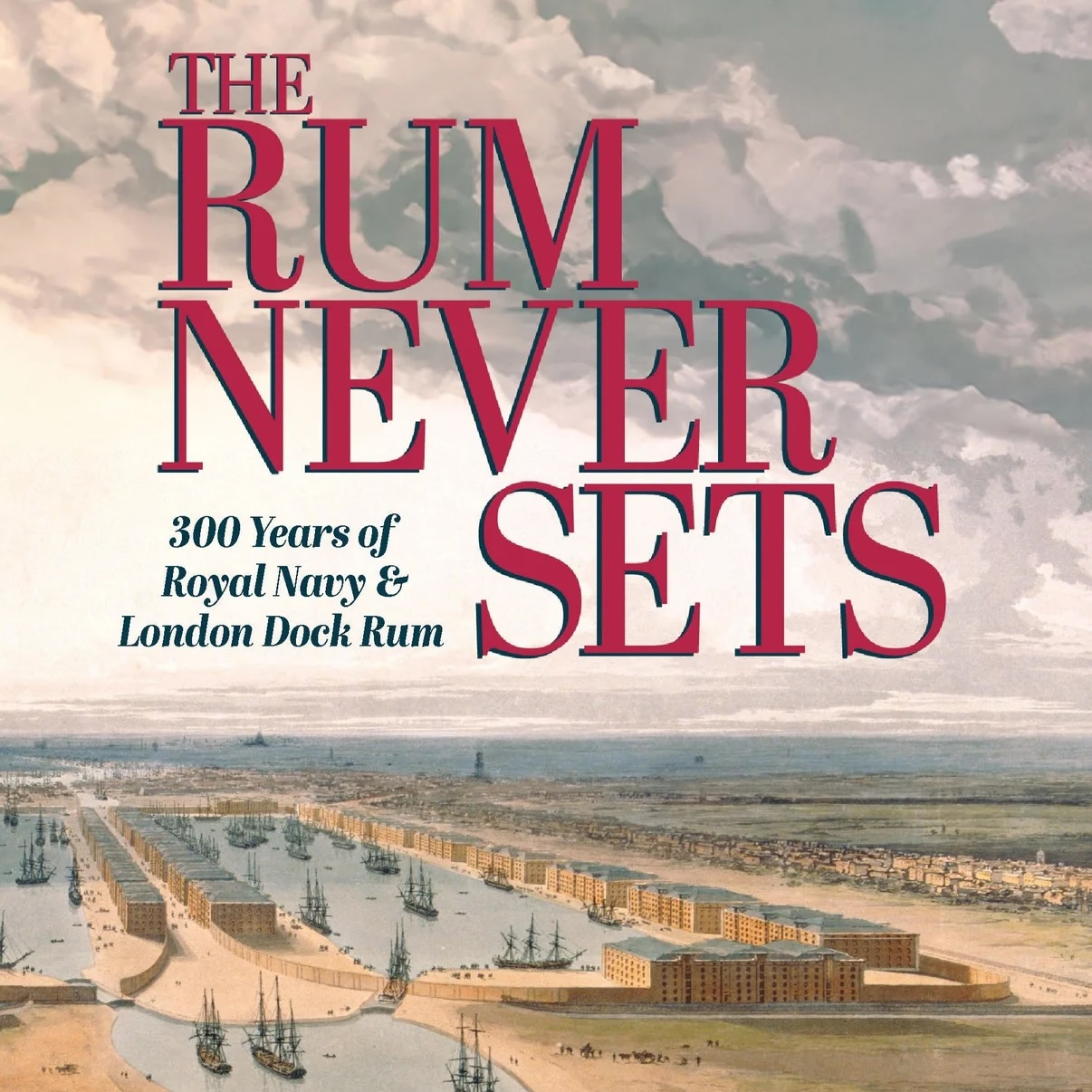Navy rum
Everything you need to know
From the Royal Navy's daily “Tot” to the legendary Black Tot Day, navy rum is liquid history. Learn the story, debunk the most persistent myths, and discover the characterful and rare bottles that make this style immortal.
- The legendary blend of the Royal Navy: since 1655, British sailors received their daily ‘tot’ – strong molasses rum (approx. 54.5% ABV, ‘Navy Strength’) from blends of Caribbean origin (mainly Guyana, Trinidad, Jamaica, Barbados).
- This tradition ended on 31 July 1970 – ‘Black Tot Day’.
- Typical characteristics: dark, spicy, fruity aromas + high alcohol content.
- Well-known examples: Pusser's, Black Tot, Rumclub Navy Blend.
- RumX honours the legend with its own RumX Navy Rum by Famille Ricci
Fluttering sails in a stiff breeze, pounding turbines, palm trees on the horizon and cannon fire: welcome to the diverse world of Navy Rum, probably the most famous blend in the history of spirits.
What at first sounds like a simple mixture of molasses rum (molasses = residue from sugar production) from the former British colonies, primarily Jamaica, Trinidad, British Guiana and Barbados, is in fact a tradition dating back more than 300 years.
But let's start at the very beginning!
What exactly is Navy Rum?
- A blend of rums from the former British colonies in the Caribbean: Jamaica, Saint Lucia, Barbados, British Guiana (sometimes also Mauritius).
- Distilled from molasses
- Navy strength: high alcohol content of 54.6–57%
In the 17th century, the daily life of many sailors in the British Navy was often marked by scurvy, a vitamin deficiency disease, due to weeks of travelling at sea. They also suffered from mental health problems caused by the many naval battles. In order to curb infections and lift the general mood, the Royal Navy decided in 1655 to distribute a daily ration of rum to sailors on all its warships. This so-called ‘tot’ (which translates as “little sip”) consisted of one-eighth of an imperial pint (71 ml) of rum with 95.5 proof (54.6% alcohol content) and was issued at noon. Even today, this rum is still called ‘Navy Rum’ in reference to its close connection to the navy.
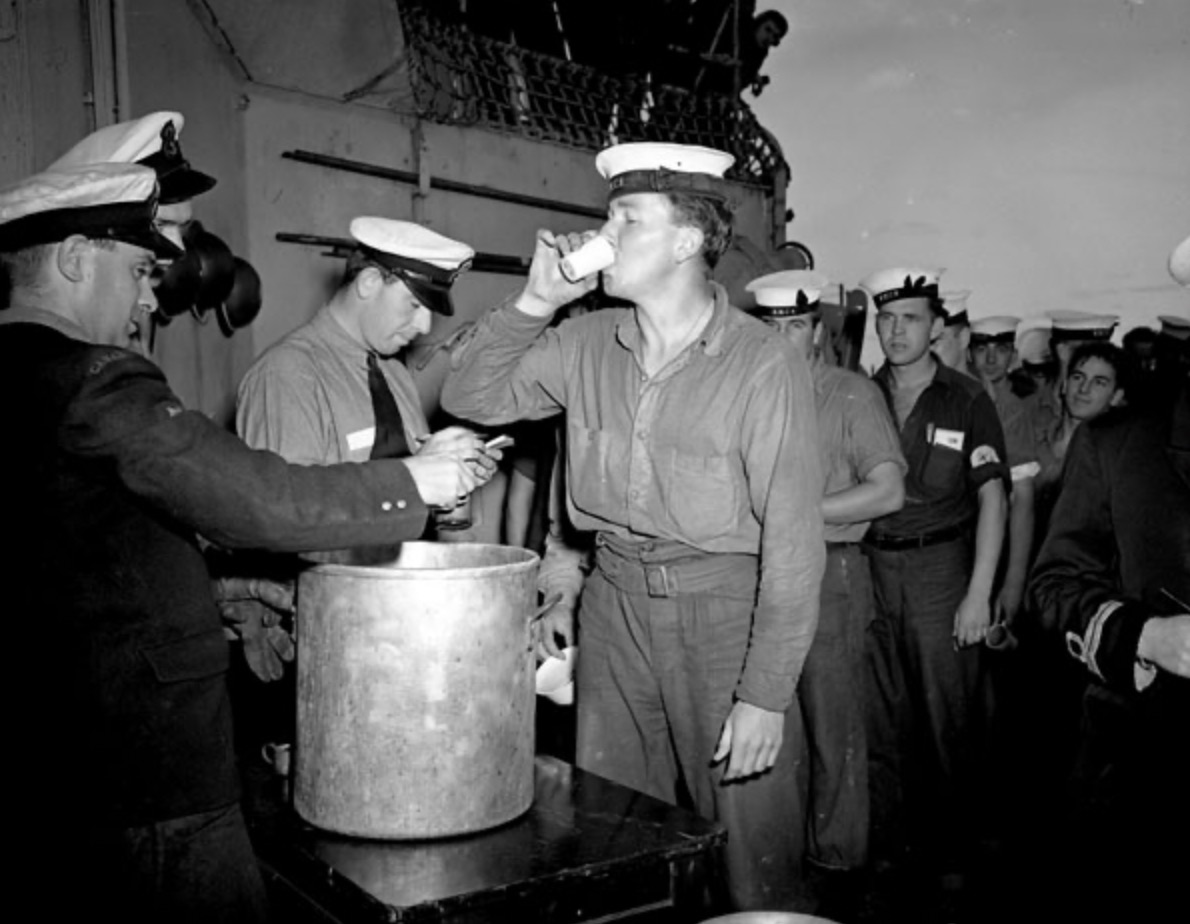
Sailors in the Royal Navy traditionally drank their navy rum from small tin or wooden cups known as ‘tot mugs’, ‘rum cups’ or ‘grog mugs’. These personal cups were used for the daily rum ration and were an integral part of the tradition on board. Today, Navy Rum is simply drunk from a tumbler or a tulip-shaped nosing glass so that the bouquet of the rum can fully unfold.
What is meant by “navy strength”?
As the navy was in constant contact with gunpowder, which had to be functional at all times, it was important for the Admiralty to define a drinking strength for rum that did not impair its ignitability when in contact with gunpowder – the so-called Navy Strength. To prove this, rum was simply poured onto the gunpowder and the mixture ignited. However, the fact that this practice became the standard for testing alcohol content is pure sailor's yarn. You can find more on this and other myths at the end of the article.
This iconic alcohol content has not lost its relevance in the world of rum to this day. However, thanks to the introduction of alcohol measuring devices and safety standards in the war industry, its presence shifted from naval ships primarily to the labels of countless rums.
What was Black Tot Day?
Advances in shipping and military technology did not stop at centuries-old traditions. In the late 20th century, the British government and its officers came to the conclusion that modern measuring devices and heavier artillery were no longer compatible with daily alcohol consumption and decided in 1970 in the British Parliament during ‘The Great Rum Debate’ to discontinue the daily rum ration for good.
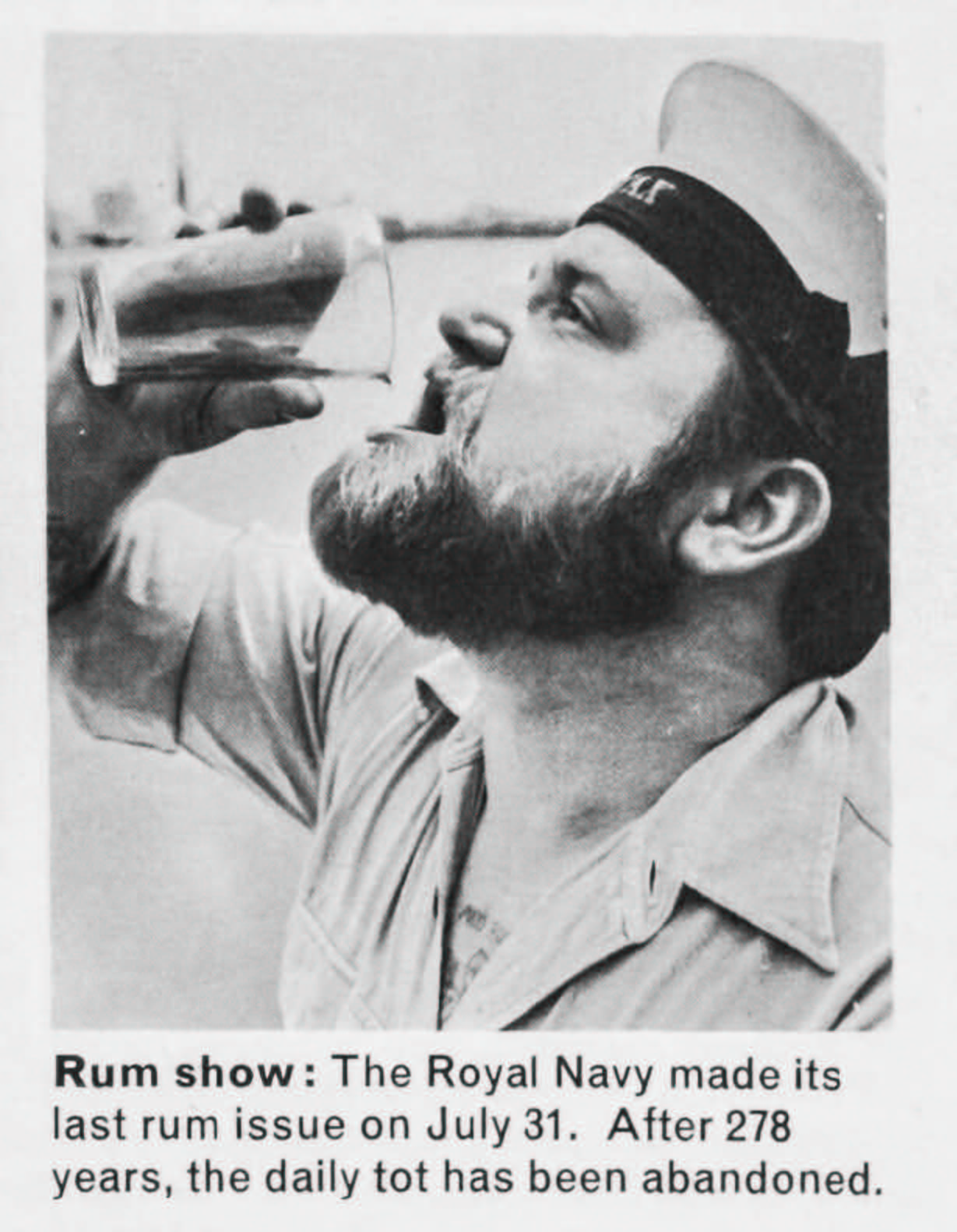
On 31 July 1970, the last rum ration was served. This day, considered deeply tragic by sailors, has since been celebrated as Black Tot Day not only by naval personnel but also by rum lovers worldwide. The Navy's remaining stocks were stored and later found their way into auctions as highly sought-after glass containers encased in wickerwork, where they still fetch top prices today. However, we know from many reports from the RumX community that buying one of these flasks is always a big gamble, and that the quality and blend compositions vary greatly.
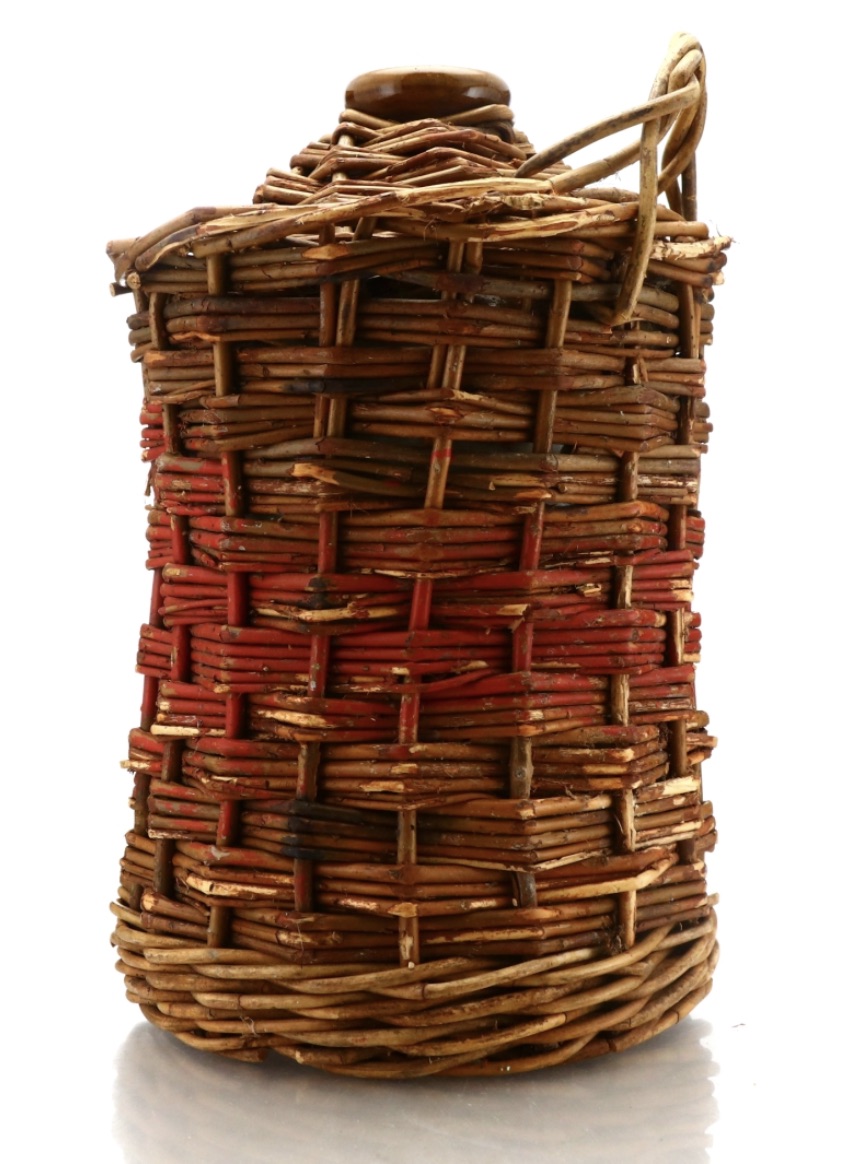
What does Navy Rum taste like?
Although the basic recipe for the blends was standardised by the Royal Navy over time, the ingredients used in each rum-producing country varied greatly in some cases. We have analysed thousands of rum reviews and tasting notes on RumX – what unites Navy Rums is a highly complex interplay of the typical aromas of the rum countries used:
- Jamaica: Tropical fruits such as pineapple and mango provide the fruity notes thanks to their high ester content (fruit aroma molecules).
- British Guiana: Dark, earthy aromas of coffee, leather and chocolate give the blend depth and structure.
- Barbados: Coconut aromas provide creaminess and sweetness.
- Trinidad: Fresh herbs, dark spices and a subtle smoky note give the composition a mysterious kick.
The complexity and quality of a navy blend can be increased at will, from an inexpensive sailor's drink to a fine captain's drop, depending on the duration of the respective barrel ageing. But how can one find one's way through the variety of different navy rums? Let's take a closer look at the individual quality levels!
What are the best-known navy rums for beginners and new sailors?
In 1979, Charles Tobias obtained the original recipe for Navy rum and began bottling it in Navy Strength. The recipe had been kept secret for a long time. He named the rum ‘Pusser's’ after the purser, the paymaster on board who used to be responsible for rum rations. Subsequently, other manufacturers and rum brands jumped on the bandwagon and a steadily growing group of enthusiasts of this style formed. These uncomplicated, easy-drinking entry-level representatives are the perfect companions for a wild sailor's party. Thanks to their easy availability and accessibility, often through the addition of sugar, these navy rums have now conquered markets worldwide.
What are navy rums for advanced connoisseurs and brave lieutenants?
In recent years, many rum brands have experimented with navy blend recipes and brought exciting bottlings to market. These representatives do not increase the alcohol content, but the quality! Significantly older casks provide more complexity and depth, taking you on an exciting journey of discovery into the world of British rum style.
What are the best navy rums for professionals and experienced captains?
You've sailed all seven seas, know your way around the world of rum, and after a hard day at sea, want to relax in your captain's cabin and enjoy only the very best Navy rums? Only the oldest and finest rum casks find their way into these Navy rums, which are priced at over 100€!
Interesting fact: brothers Sukhinder and Raj Singh, founders and long-time owners of The Whisky Exchange, purchased several 4.5-litre original flasks from the British Navy from a former sailor and, in 2007, had the opportunity to acquire the rest of the stock. They then bottled this liquid piece of rum history in high-quality 0.7 litre bottles, making the historic taste experience accessible to everyone with guaranteed quality: The Last Consignment!
Some of the distillations contained therein date back to the early 20th century. As a fitting extra, the rum bottle comes with a traditional metal tot mug in the package.
As you can see, navy rum has a firm place both in rum history and in the hearts of rum lovers worldwide. Reason enough for us at RumX to make our contribution to this special tradition: together with the french Rum brand Famille Ricci from the Côte d'Azur, we have realised our dream and created an exclusive Navy Rum for our huge RumX community. 100% according to our specifications, blended in a complex process over many weeks – with rums that have been aged for up to 31 years.
Curious to learn more about the story behind this unique collaboration with Famille Ricci? Discover how RumX is reinterpreting navy rum here.
Discover our rumThe biggest myths surrounding navy rum – truth or fiction?
Navy rums are true legends – steeped in history and rich in flavour, they are a delight for everyone, from curious novices to seasoned professionals. Speaking of professionals, we spoke to one of the most renowned rum experts and author Matt Pietrek about navy rum. He dispelled some myths and shared some fascinating side facts with us:
Genuine ‘navy strength’: 54.5% ABV – not 57%
- In the British proof system, the Royal Navy's rum was issued ‘4.5 degrees below proof’ – that is 54.5% ABV. ‘100° proof’ (= proof strength) corresponds to 57.1% ABV and is something else entirely.
- Takeaway: When you say ‘navy strength’, you mean 54.5%.
Gunpowder show? Pure sailor's yarn.
- The romantic gunpowder test was not routine in the navy. From the mid-18th century onwards, hydrometers were used – precise, standardised, safe. Gunpowder and spirits were stored separately on board.
- Takeaway: Science instead of pyro show.
The real blend: Demerara & Trinidad first
- The typical Navy blend of the 20th century: around 60% Demerara, 30% Trinidad, 10% others. Jamaica? If at all, only a minor role.
- Taste: Deep molasses notes and liquorice sweetness from Guyana, balanced by dry, spicy accents from Trinidad.
- Takeaway: Demerara rum was the Navy's favourite.
The ‘tot’ in transition
- Rum every day since 1655? Not quite – in the early days, a gallon of beer per day was considered the standard, with rum, brandy, wine or arrack only as substitutes! Later, more and more sailors chose ‘grog money’ instead of rum.
- Takeaway: Money trumps intoxication.
For a real deep dive into the world of navy rum, we recommend Matt's new book on the subject.
Get the bookBut enough talk and rambling, now it's your turn:
- Which navy rums are your favourites?
- Which rum countries do you prefer in your navy rum?
- What important facts have we forgotten?
Write your answers in the comments!
